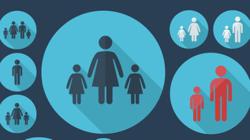After most of the world began working from home during the pandemic, the trend now seems to be to return physically to the office but with a caveat: we don't necessarily want to go in five days a week, or we want to have the choice to go. So working from home is here to stay in some form of another. — pxhere.com
We're a couple of years on from the 2020 Covid-19 pandemic, and I’m looking a lot at work culture and how things have changed.
Remember the Great Resignation? And working from home? Coming out of that time, we saw a trend of workers taking back control as the pandemic gave us all a new perspective on what’s important. People moved jobs for higher pay or retired early, taking control of their lives.
The ball was in the employees’ court for once, and after decades of employers having the upper hand, workers finally had a bargaining chip. Would this even things out?
Not so much.
As of May 2023, quits have slowed to pre-pandemic levels, which suggest the Great Resignation was greatly temporary. And early retirees are returning to work. Factors like financial necessity and the need to feel useful have pushed people back into jobs. It seems retiring for the sake of retiring isn’t necessarily what people want.
Many perhaps were caught up in the wave of glee at being in a post-pandemic world with no lockdowns and no scary viruses. But maybe they didn’t plan realistically enough when it came to their finances. Less than a year after the Great Resignation people started returning to work because, I’m guessing, many realised they didn’t have enough to keep going. And also people need purpose.
Retiring and lounging on the couch for eternity sounds awesome when you’re working hard, but try it and it gets old real quick (OK, not real quick, maybe six months later). People need a purpose, and work can provide that. If a job isn’t fulfilling, go find something that is, but being “of use” and providing some kind of service can help people feel useful and contribute to a full life.
How about the working from home thing? Are people still doing that?
Well, according to management consultancies, currently 12.7% of full-time employees work from home and another 28.2% work in a hybrid model. In Singapore in 2020, 49% of the workforce worked from home, though that was right at the height of the pandemic so those numbers have probably come down.
Globally before the pandemic, only 5% of the workforce worked from home. And it’s projected by 2025 that 22% of work around the world will be from home. That’s good news for people who have a home office but bad news for office real estate.
As more people flock to work from home, a lot of companies have seen it as an opportunity to save money on a lease. If there are fewer people coming to work, you need fewer desks, right? And that could translate into leasing fewer floors in an office building or even fewer office buildings.
It’s estimated remote work dropped office real estate values by 33% during the first year of the pandemic and the longer-term value loss will be 28%. As usual in tough economic times the best of breed flourishes and the rest go extinct – and it’s the same with real estate. The trend has been that high quality office real estate has been buffered while lower quality office buildings have lost a lot more value.
But what about the prognostications of people like Elon Musk telling employees at Twitter (now ridiculously named X – I’m still refusing to call it that) if they wanted to work from home, they could go work somewhere else. Then Musk famously slept in the Twitter offices, I suppose to show everyone how into fixing the platform he was. Spoiler: It hasn’t worked out. But I digress.
Working from home likely peaked during the pandemic. A lot of us realised working and sleeping and doing everything in the same space 365 days a year can be painful and we actually do want to go to the office – just not five days a week, or we want to have the choice to go. And as much as I want Musk to be wrong, he is right in that the interpersonal team building that happens in person is stronger than what happens working remotely.
But work from home is here to stay in some form of another.
There it is, two post pandemic trends: one that sort of died out and another that has adapted and morphed and continues. It's interesting to look at what we think is going to happen and then how things actually play out. One thing you can predict is that the future always surprises.
Big Smile, No Teeth columnist Jason Godfrey – a model who once was told to give the camera a ‘big smile, no teeth’ – has worked internationally for two decades in fashion and continues to work in dramas, documentaries, and lifestyle programming. Write to him at lifestyle@thestar.com.my and follow him on Instagram @bigsmilenoteeth and facebook.com/bigsmilenoteeth. The views expressed here are entirely the writer's own.





